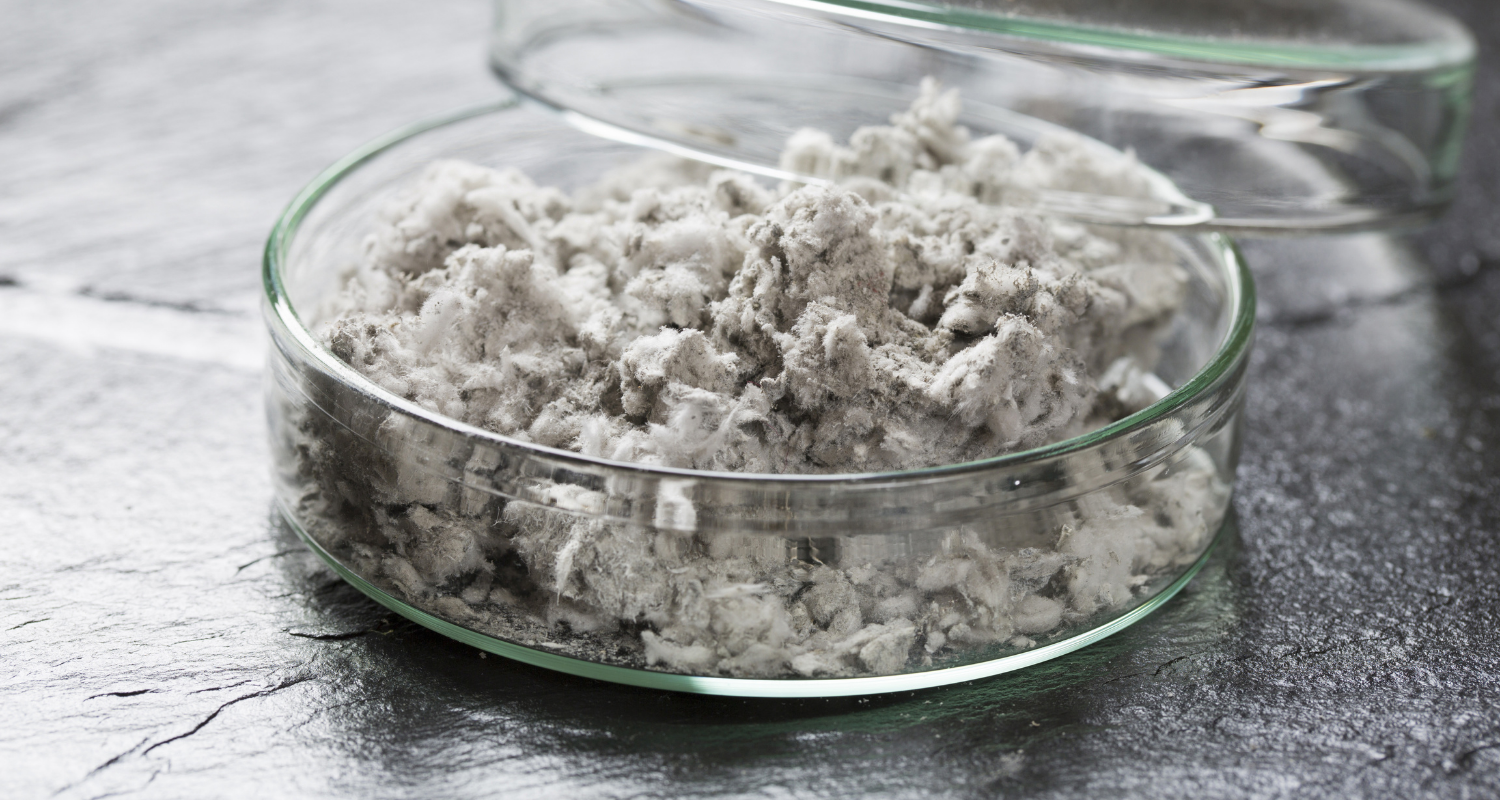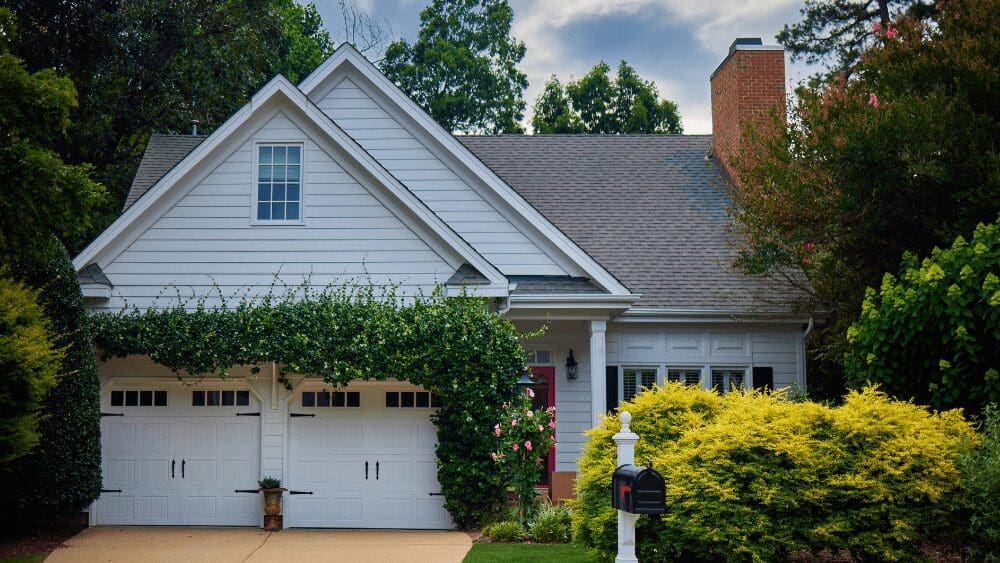
Whether you are selling, buying, or renting a house, it’s important to know that more than half of the homes in the United States were built with materials containing asbestos. If your home was built before 1980, there could be asbestos anywhere — especially if you live in the northeast and midwest. “There could be asbestos in all sorts of areas: very old heating systems, tiles on the basement floor, the insulation in the attic, or the exterior siding,” says Nelson Zide, a Massachusetts real estate agent with more than 40 years in the business. What does that mean if you have a house that you suspect has asbestos in it? Do you have to disclose asbestos when selling a house? Are you obligated to remove the asbestos prior to selling? Heck, how do you even know if your house does have asbestos in it? That is where we can help. We’ll shed some light on all of the questions you may have about selling a house that may have this harmful substance. Asbestos is a bit of a wonder mineral because it possesses qualities that can be useful for a number of applications. It’s made up of thin fibers that are strong, flexible, and resistant to corrosion. The fibers also possess the ability to withstand heat and flame. With qualities like these, it’s no wonder that the mineral was added to things like cement, cloth, paper, plastic, and more. It’s estimated that “more than 5,000 products contain or have contained asbestos”. Common products that contain asbestos include: Asbestos is a hazardous material because the fibers can cause serious health problems. When the fibers are inhaled, scar-like tissue forms on the lungs, and this is called asbestosis. The buildup causes the lungs to lose their ability to function properly, thus leading to disability and death. Scientific study shows that asbestos exposure can lead to various types of cancer. Mesothelioma cancer is caused exclusively by asbestos and forms in the lining of the lungs or abdomen. Other cancers linked to asbestos include ovarian cancer and laryngeal cancer. Asbestos is also linked to other diseases like: As harmful as asbestos can be, the U.S. hasn’t banned the use of it. It can still be found in gaskets, roofing material, friction products and fireproofing products. With that said, asbestos is highly regulated and OSHA has outlined specific standards of use in general industry, construction, and maritime applications. If your home was built before 1980, it’s reasonable to suspect that there may be some form of asbestos lurking in your home. The most common areas where asbestos products would be used include: Asbestos is a threat to someone’s health when the product containing asbestos has been damaged or disturbed and the fibers become airborne. You can do a cursory inspection of your home and take note of any areas that show signs of wear or damages. If you don’t see any signs of damage, leave the material alone. “If the old linoleum flooring isn’t loose and it’s not cracked or anything, then you don’t have a problem. It’s only a problem if it’s cracked or loose,” says Zide. It is recommended that you check the material on a regular basis to make sure it doesn’t show signs of: Unfortunately, asbestos isn’t something you can see with the naked eye. To see the microscopic fibers, you would have to hire an asbestos inspector and have tests done. You do not want to take samples and send them for analysis on your own because if you make a mistake, the sample will be more hazardous than if you left the material alone. Depending on where you live, an asbestos test can cost:
In the event of your tests showing that your house does have asbestos, there are a few things you can do: repair it, remove it, do nothing, or sell for cash. Keep in mind that if you decide to repair it or remove it, it’s recommended to contact a certified asbestos removal contractor because they are skilled at removing or repairing asbestos in the safest manner possible. Asbestos material can be repaired by sealing it or covering it up. This is a less expensive option than removing it, but it could be a problem if the material needs to be removed at a later date. To repair the material by sealing it, a sealant will be used to coat the material and bind the fibers together. You can repair insulation for boilers, furnaces, and pipes using this method. To repair the material by covering it, a protective wrapping or jacket will be placed around the material preventing the fibers from being released. You can repair floor tiles and textured wallpaper using this method. In most cases, removal should only be considered if you’re remodeling your home and the asbestos material is likely to be disturbed or the material is so severely damaged that it cannot be repaired. This is likely going to be a costly job because you’ll need to hire a specialist who can remove the material without posing any health risks to your household. The cost to remove asbestos from your home can range between $1,159 to $2,991. However, if your whole house needs to be done, you can expect to spend between $15,000 to $30,000+. In the event that you don’t want to deal with the asbestos problem, if the asbestos isn’t damaged and isn’t a health risk, you don’t have to do anything about it. However, while you may not want to repair or remove it, with your knowledge of its presence, you do have to disclose it to potential buyers. We’ll cover this in more detail in the next section. If you are on a limited time frame and need to sell quickly but don’t want to deal with the asbestos or the cost to remove the asbestos is too much, you can sell your house “as -is.” You also have the option of selling it for cash to a cash buyer or use a program like HomeLight Simple Sale where you can get a competitive cash offer in as little as 48 hours. Unfortunately, if you know about the asbestos, you likely do have to disclose it. Though not every state requires seller disclosures. On the federal level, sellers aren’t legally required to disclose asbestos, but that doesn’t mean the state or local municipality won’t require a disclosure. It’s always best to check with your state and local municipality for their requirements. Be aware that if you disclose that your house has asbestos, the buyers may want to negotiate. They may want to offer a lower price for the house or they may ask for credit so they can handle the repairs on their own. Note: If they ask for credit for repairs, make sure to get an estimate for removal or containment because prices can vary depending on how much asbestos is present and how accessible the material is. Let’s review: In the end, you may have to negotiate the terms of the sale, but you’ll probably sleep better at night knowing that you did the right thing. Plus, should something asbestos-related happen to the new homeowners, you’re more protected from legal recourse because you abided by the disclosure requirements. If you’re selling a home with asbestos, you can find a top agent who has the experience you need to guide you through the process by using HomeLight’s Agent Match tool. We analyze millions of home sales to find the best performing agents in the country.
There could be asbestos in all sorts of areas: very old heating systems, tiles on the basement floor, the insulation in the attic, or the exterior siding.
What is asbestos?
What are the hazards of asbestos?
How do you know if your house has asbestos?
What do I do if I have asbestos?
Repair it
Remove it
Do nothing
Sell for cash
Do you have to disclose asbestos when selling a house?
The bottom line — do the right, and safe thing



